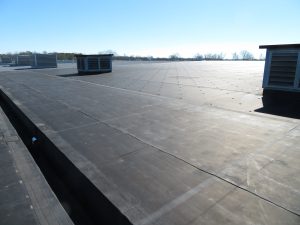5 Easy Facts About EPDM Rubber Membrane - EPDM Roofing - Essex Junction, VT Described

The Single Strategy To Use For RUBBERALL Roofing Family of Products - Water Tight
Penetrations such as skylights, a/c units, and chimneys will also add to expenses as they present more roofing system installation problems. Get a quote for a rubber roof with our roof calculator. Kinds of rubber roofing Rolls of rubber sheets are generally utilized on flat roofing systems. Even so, they can also operate in pitched settings as a primary product or atop an existing structure, especially metal roofs.
Single-ply roofing EPDM roofing expenses, pros, and cons Image source: Heidler Roofing What we like What we do not like 30-year-plus life expectancy Black color soaks up heat Easy-to-install Not the most beautiful in many cases Fire and hail resistant Potential for shrinkage Budget-friendly Ethylene Propylene Diene Terpolymer, an artificial rubber that everybody calls EPDM even though it's a Terpolymer, not a Monomer, is technically the only roof among the 3 single-ply options we compare in this short article mainly made from rubber.

Rubber Membrane Flat Roof - Three Rubber Roofs - Flat Roof Materials Videos
Numerous roofers prefer EPDM since it can be installed utilizing a singular, smooth sheet for numerous jobs instead of several, layered rolls. Numerous building owners choose EPDM because it's fireproof and holds up well to hail. Of course, there's also EPDM's convincing track record. Learn More Here by the EPDM Roofing Association showed that 30-year-old EPDM membrane samples might last another 20-plus years through aging tests.
Facts About EPDM Rubber Roof Membrane - Permaroof Uncovered

So, what's not to like? For starters, EPDM roofs can diminish under the right conditions. This exposes the layers underneath the rubber roofing membrane and possibly permits water to sneak into the structure. Second of all, EPDM usually is available in black, which suggests structures baking in the pounding sun will only get hotter with an EPDM roofing.

3 Types of Roof Membranes for Your Flat or Low Slope Residential Roof
TPO roofing costs, pros, and cons Image source: Central Homes Roofing What we like What we do not like Affordability Uncertain track record Color alternatives Lifespan TBD Energy effectiveness Prolonged setup Heat-welded seams Setup needs experience First introduced to the United States in the 1980s, TPO, or Thermoplastic Polyolefin, is reasonably new in the membrane roof space.
A white TPO roof system can improve energy efficiency in hot climates. Installing TPO normally involves the use of a hot air gun to bond any seams along the surface. These heat-welded seams are low upkeep and last longer than the tape or adhesive sealants utilized to protect EPDM roofing seams.
